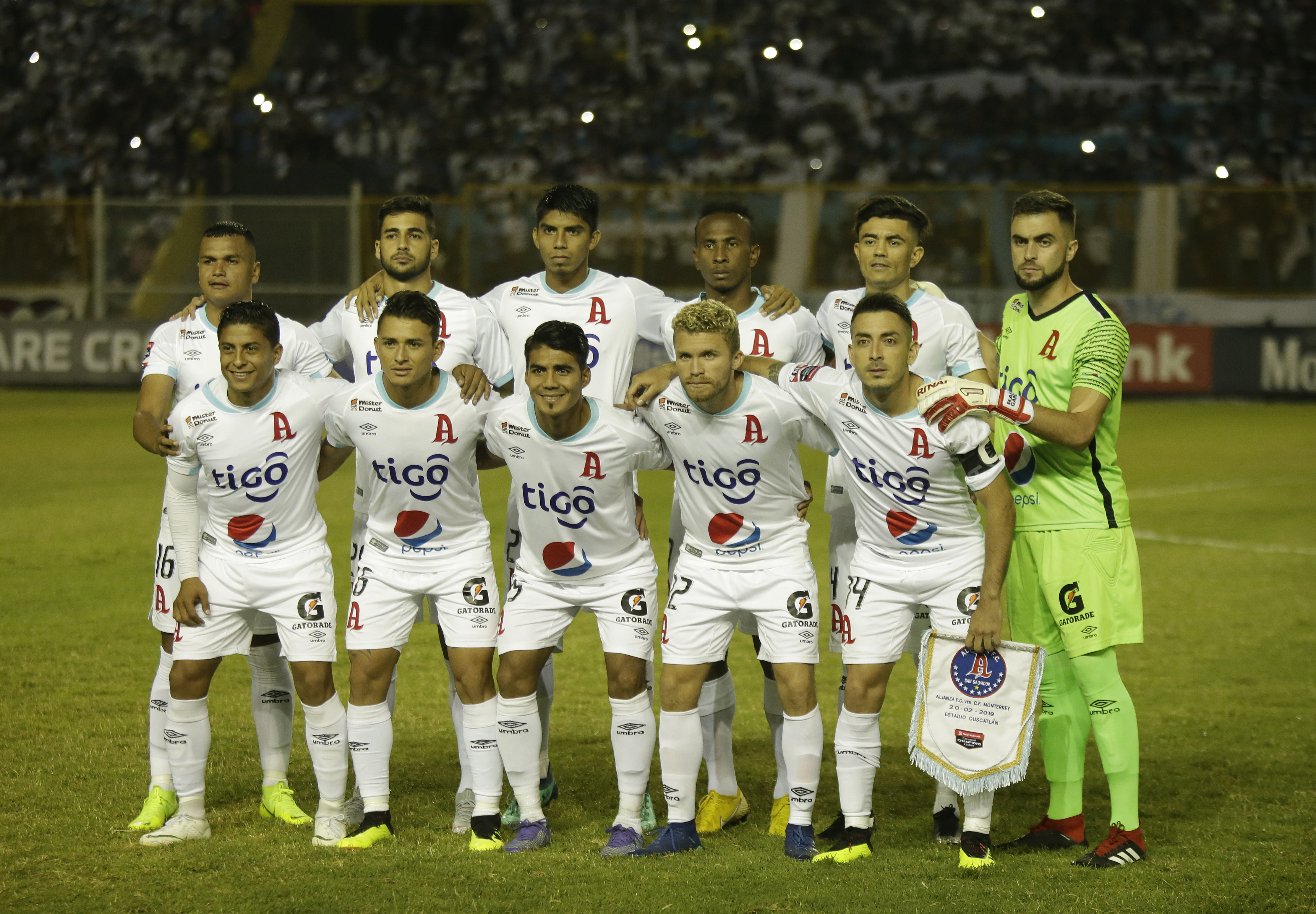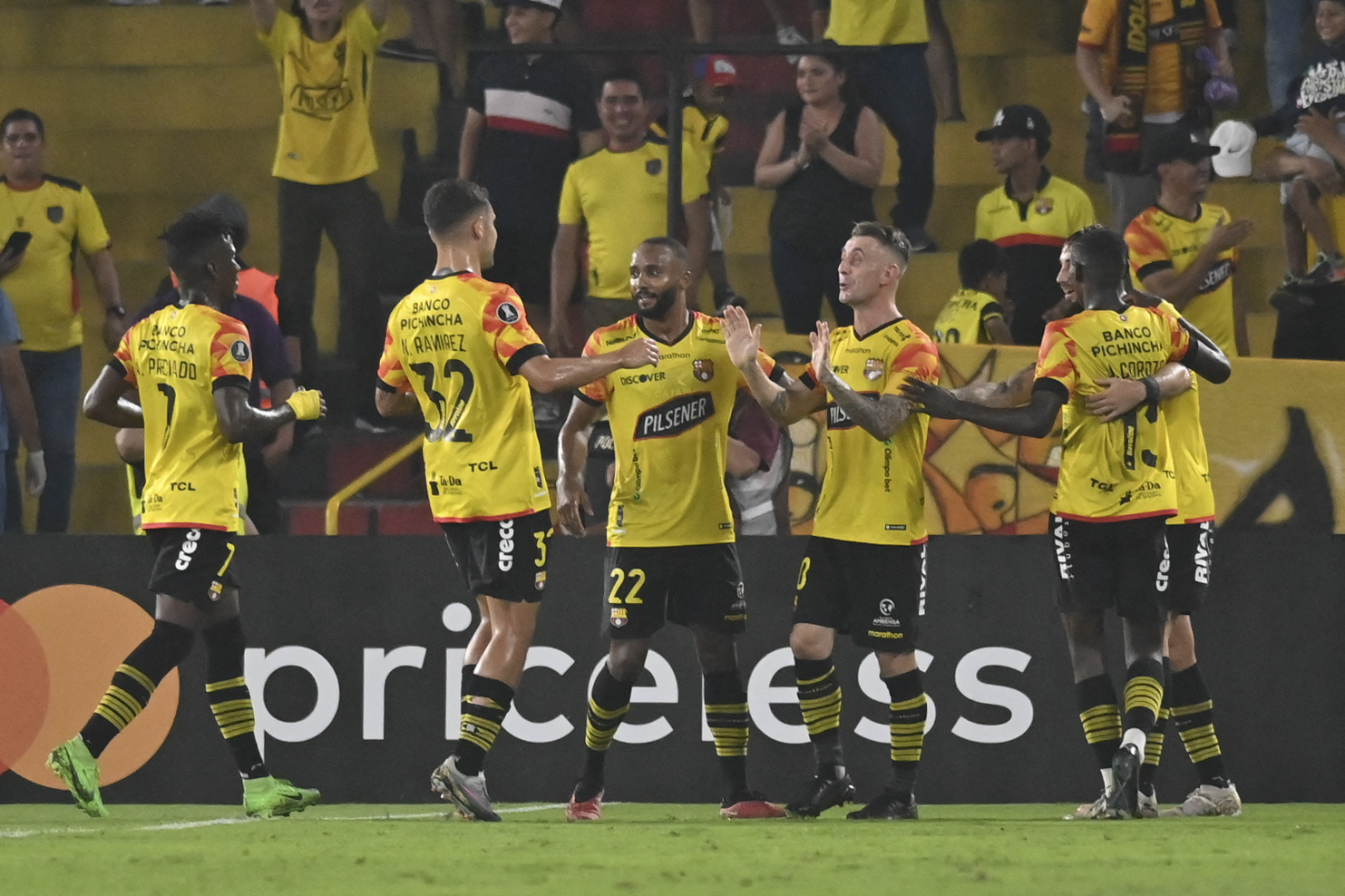
If you can't beat them, copy them. In every aspect of the game, clubs around the world have long looked to their contemporaries for inspiration.
Ideas are shared, borrowed, replicated – in everything from kit design to youth development, marketing and, of course, playing style.
The world's biggest clubs have had a huge influence, setting the trend for other teams – be it those down the road or across the planet.
And on occasions, those teams have even adopted the name of an illustrious club from elsewhere. Here, a look at some notable examples...
32. Associação Desportiva Vasco da Gama (Brazil)

Founded in 1898 and named after the Portuguese explorer, Vasco da Gama are one of Brazil's most famous football clubs.
A symbol for anti-racism and multiculturalism, Vasco's motto is "Respeito, igualdade, inclusão" (Respect, equality, inclusion). In 1952, another Vasco da Gama was formed in northern Brazil: Associação Desportiva Vasco da Gama have a virtually identical club crest to the Rio team and also play in black and white.
31. Ajax Cape Town (South Africa)

Founded in 1970 as Cape Town Spurs, the South African club entered into an agreement with Dutch giants Ajax to become a feeder team for the Amsterdam outfit.
That saw the club's name change to Ajax Cape Town in 1999, with the South African side adopting the colours (red and white) of the Dutch team. The agreement ended in 2020 and the club reverted to its original name, Cape Town Spurs.
30. Wycombe Wanderers

Wycombe Wanderers were officially founded in 1887 after three years of informal matches as North Town Wanderers and it is thought that the club took its name from Wanderers, the first winners of the FA Cup in 1872.
Formed in 1859 as Forest Football Club in Leytonstone in east London and renamed Wanderers in 1864, the older club won five FA Cups in total but was dissolved circa 1887 – around the time Wycombe were just getting started.
29. Uniao Flamengo Santos (Botswana)

Drawing inspiration from two of Brazil's biggest clubs, Uniao Flamengo Santos was formed in Botswana in 2003.
Taking the unusual step of naming their club after two teams, Uniao also pay homage to the Argentine national team by playing in light blue and white striped shirts. Nicknamed the Saints, Uniao won Botswana's FA Cup in 2009.
28. Colo-Colo FR (Brazil)

Colo-Colo have won more Chilean championships than any other club and are the South American nation's best-supported team.
The Santiago side also gave inspiration to a club in Brazil, with Colo Colo de Futebol e Regatas founded in 1948. Based in the northern region of Bahia, the Tigrão (Big Tiger) won the state championship in 2006.
27. América FC (Brazil)

One of Rio de Janeiro's historic clubs, America FC was founded in 1904 and made the news in 2024 as Brazil legend Romário took over as president. At 58 years old, he was also registered as a player, hoping to play alongside his son Romarinho.
More clubs have been named after America than any other Brazilian team, with homonyms across the country in Natal, São José do Rio Preto, Três Rios, Manaus, Teófilo Otoni and Fortaleza.
26. Manchester 62 FC (Gibraltar)

Founded in 1962 as Manchester United (Gibraltar) Football Club by a group of Red Devils supporters, the fans were granted permission by Sir Matt Busby to use the Manchester United name.
Seven-time champions of Gibraltar between 1975 and 1999, the club changed its name to Manchester 62 Football Club in 2013. Their nickname? The Red Devils of Gibraltar.
25. Club Atlético Peñarol (Argentina)

Peñarol are Uruguay's most successful side and the Montevideo club's yellow and black colours are known by football fans across the world.
Club Atlético Peñarol were founded in 1891 and in 1922, a team with the same name was formed in the Argentine city of Mar del Plata. A multi-sports club, Argentina's Peñarol is best known for its basketball team, which plays at the top level. The club also has football and martial arts sections.
24. Inter Club d'Escaldes (Andorra)

Italian giants Internazionale have fans all over the world and there are several clubs in different countries named after the Milan side.
Those include former Angolan champions Grupo Desportivo Interclube and Finnish side FC Inter Turku. There's also Inter Club d'Escaldes in Andorra, founded in 1991 and champions for three seasons in a row in 2020, 2021 and 2022. All three clubs play in Inter's iconic blue and black stripes.
23. Sociedade Esportiva Palmeirinha (Brazil)

Sociedade Esportiva Palmeirinha were founded in 1955 by fans of São Paulo club Palmeiras, one of Brazil's biggest teams.
Palmeirinha, which means little palm tree (or little Palmeiras in this case), plays in a similar green and white strip to the São Paulo side. The lower-league club became professional in 1967.
22. Lincoln Red Imps

Lincoln Red Imps were founded on the island of Gibraltar in 1976 as Blue Batons, so named because the players had been associated with the police youth team.
Renamed after English club Lincoln City and incorporating the Imps suffix, a reference to a mythical figure inside Lincoln Cathedral which is also Lincoln City's nickname, the Red Imps have gone on to become Gibraltar's most successful side. The club's multiple league titles include 14 in a row between 2003 and 2016.
21. Berekum Chelsea (Ghana)

Berekum Chelsea, previously Bechem Chelsea, were founded in Ghana in 2004 and named after the famous west London club.
Ghanaian champions in 2011, Berekum Chelsea have also appeared in the CAF Champions League. The club's kit is similar to the English Premier League team and they too are nicknamed The Blues.
20. Independiente del Valle (Ecuador)

Founded in 1958 in Ecuador's capital Quito, Independiente del Valle have enjoyed success in recent years, winning a national championship in 2021 and the Copa Sudamericana in 2019 and 2022.
Copa Libertadores finalists in 2016, Independiente del Valle took their name from historic Argentine side Club Atlético Independiente and their original crest was very similar to the one used by the Avellaneda outfit.
19. Club Real Potosí

Founded in 1988, Club Real Potosí in Bolivia drew inspiration from La Liga giants Real Madrid both with their team name and their crest, which is very similar to the one worn by Los Blancos.
Bolivian champions in 2007, Real Potosí have finished as runners-up on a number of occasions and featured in both the Copa Libertadores and the Copa Sudamericana. The team plays in purple shirts, shorts and socks.
18. Botafogo Futebol Clube (Cape Verde)

Some of Brazil's biggest football legends – including Garrincha, Nílton Santos and Jairzinho – all emerged at Botafogo in the 1950s and 1960s.
The Rio de Janeiro club gained a big following both at home and internationally around that time and over the years, several teams have taken the team's name. Among those are Botafogo Futebol Clube (PB) in Paraíba and Associação Botafogo Futebol Clube in Goiás. And outside of Brazil, there's another Botafogo FC in Cape Verde, one of the nation's strongest sides and champions in 1980. Each inspired by the original Botafogo de Futebol e Regatas, all wear the Rio club's iconic black and white striped shirts.
17. Sporting Clube de Braga (Portugal)

Founded in 1921 by fans of Lisbon side Sporting Clube de Portugal (Sporting CP), Braga were officially named Sporting Clube de Braga.
Initially, Braga wore green and white kits like Sporting and used the same equipment. That did not go down too well with those fans who preferred Benfica, so by way of a compromise, Braga would adopt the colours of the Lisbon giants. These days, the name Sporting Clube de Braga persists, and SCB play in red and white – although the red shirts with white sleeves are more reminiscent of Arsenal and one of the club's nicknames is Os Arsenalistas (the Arsenalists).
16. Sport Luanda e Benfica (Angola)

S.L. Benfica stands for Sport Lisboa (e) Benfica, unless it is referring to the Angolan affiliate of the Portuguese club. If so, it's Sport Luanda (e) Benfica.
Based in the Angolan capital Luanda and founded in 1922, Sport Luanda e Benfica shares the same colours with the Portuguese side, while the team's logo is almost identical. Angola is a former Portuguese colony and Portuguese remains the African nation's official language.
15. Boca Juniors de Cali (Colombia)

Founded in 1937, Boca Juniors de Cali twice finished as runners-up in the Colombian championship – in 1951 and 1952.
Named after the Buenos Aires club, Boca Juniors de Cali disappeared after an economic crisis in 1958, but were refounded in 2019. They wear the same colours as the Argentine outfit.
14. Club Atlético River Plate (Uruguay)

Founded in 1932, Uruguay's Club Atlético River Plate plays in red and white striped shirts like the ones worn by its predecessor, River Plate Football Club, which dissolved in 1925.
The name comes from the English for Río de la Plata and Uruguay's first River Plate was founded in 1897, four years before the famous Argentine club. However, the newer club has adjusted its name to mirror that of the Buenos Aires outfit.
13. Everton de Viña del Mar (Chile)

Everton de Viña del Mar were founded in 1909 by English immigrants in Chile and are four-time Primera División champions.
English side Everton were touring in nearby Argentina around the time the Chilean club was formed, so that might explain the choice of name, although another theory mentions a fan of the Toffees. Everton de Viña del Mar play in blue and gold.
12. Alianza FC (El Salvador)

Alianza Fútbol Club were founded in 1959 under the name Atlético La Constancia and later gained the sponsorship of the Intercontinental Hotel and its president, the Peruvian Axel Hochkoeppler.
Grateful for Hochkoeppler's support, club president Enrique Sol Meza opted to change its name to Alianza FC in honour of Peruvian side Alianza Lima. One of El Salvador's most successful clubs, Alianza won their 18th Primera División title in 2024 and were the first Central American team to win the CONCACAF Champions Cup (in 1967).
11. Santos de Guápiles (Costa Rica)

Pelé visited Costa Rica on a tour with Santos in 1961 and played friendly matches against Saprissa and Herediano. Inspired by the Brazilian great, a newly-formed club in the city of Guápiles was created that same year and named Santos de Guápiles.
Santos de Guápiles have mostly played in Costa Rica's top flight, finishing as runners-up in 2001/02 and again in 2012. Following Pelé's death in December 2022, the club launched a commemorative away kit in Santos colours to honour the three-time World Cup winner.
10. Olympiacos Nicosia (Cyprus)

Olympiacos are Greece's most successful football club. Founded in 1925, the Piraeus outfit won their first Greek championship in 1931.
Shortly afterwards, another Olympiacos was formed in Cypriot capital Nicosia. Drawing inspiration from the Greek side with their name, Olympiacos Nicosia wear different colours (green and black). They were champions of Cyprus in 1967, 1969 and 1971.
9. Mighty Blackpool (Sierra Leone)

Sierra Leone club Mighty Blackpool were founded in 1923 under the name Socro United but changed in 1954 in homage and admiration for Blackpool and England player Stanley Matthews.
Based in the capital Freetown, Mighty Blackpool are Sierra Leone's most successful club, but won the last of their 15 titles in 2001. Like the original Blackpool, the African version wear tangerine shirts, but with black shorts and socks.
8. Bloemfontein Celtic (South Africa)

South African side Bloemfontein Celtic were founded in 1969 as Mangaung United but rebranded after being bought in 2001 by Jimmy Augousti.
Like the Glasgow giants, Bloemfontein Celtic play in green and white hoops and their badge is also green and white, in homage to the Scottish side. The club sold its Premier League franchise to Durban club Royal AM in 2021, but is looking to make a return to the top flight.
7. Club Atlético Torino (Peru)

Founded in 1957 in the northern city of Talara and named after the famous Italian club of the same name, Club Atlético Torino plays in Peru's second tier.
Like the Turin-based side, Peru's Torino wear maroon shirts. Their best-ever finish in the top flight was second place in 1980, which saw the club qualify for the Copa Libertadores. They have also won the Copa Perú, a tournament whose winner is promoted to the second tier, on five occasions.
6. Juventus Football Club (Belize)

Juventus are the biggest club in Italy and one of the grandest in all of European football. The Old Lady has been much imitated across the world.
Those include several sides across Italy and in Brazil, plus teams in Romania, Sweden, Ecuador, Netherlands Antilles and the French islands of Guadeloupe and Saint Martin. All of those include Juventus in their names. There's also Brunswick Zebras, Hobart Zebras and Moreland Zebras in Australia, but the most successful is Juventus Football Club, also known as the Suga Boys, five-time champions of the Belize Premier League between 1996 and 2005.
5. Liverpool FC (Uruguay)

Founded in 1915, Uruguayan club Liverpool FC took their name from the Reds due to cultural links between the two areas, with the majority of coal ships arriving in Montevideo coming from the English port city.
In 2023, Liverpool FC won the Primera División title for the first time. Unlike the Anfield side, Montevideo's LFC play in blue and black stripes, although they have used all-red strips for their away kits.
4. Arsenal de Sarandí (Argentina)

Arsenal Fútbol Club were founded in 1957 by former Argentine Football Association (AFA) president Julio Grondona and his brother.
In those early days, Grondona also played for Arsenal, based in the city of Sarandí in Greater Buenos Aires. Named after the famous London club, Arsenal Fútbol Club play in light blue and red. Argentina's AFC won the Copa Sudamericana in 2007 and a Primera División title in 2012.
3. Barcelona SC (Ecuador)

Founded in 1925, Ecuador's Barcelona Sporting Club took their name from the famous Catalan club and their crest is almost identical to the one worn by the Blaugrana.
Based in the city of Guayaquil, Barcelona SC were formed by a Spanish immigrant and have gone on to become Ecuador's most successful side, with over 15 league titles and two Copa Libertadores final appearances. As of 2024, B.S.C were the only side never to have been relegated from the nation's top division.
2. Atlético Madrid (Spain)

Atlético Madrid are one of the biggest clubs in Spain, but the Rojiblancos owe their very existence to another historic team from La Liga: Athletic Club.
Founded in 1903 by three Basque students living in Madrid, the club was set up as a branch of their childhood team, Athletic, and named Athletic Club Sucursal de Madrid. The Athletic part was later translated to Spanish, becoming Atlético. The Madrid side wore blue and white halved shirts, like Athletic, with both teams switching to their iconic red and white stripes in 1910. In a La Liga game between the two in Madrid in February 2023, Atleti gave thanks to Athletic for their role in the club's formation and wore a changed orange strip at home to allow the Bilbao side to play in red and white.
1. Corinthians (Brazil)

Many clubs across the world drew inspiration from London-based Corinthian FC and it is even claimed that Real Madrid decided to wear white because of the famous amateur side, credited with popularising football throughout the world.
São Paulo giants Sport Club Corinthians Paulista took their name from the English side, which ceased to exist in 1939, and it has served them well. Founded in 1910, Corinthians are Brazil's second-most popular team after Flamengo and one of the nation's most successful sides. Like the English club, Corinthians play in white shirts with black shorts.







